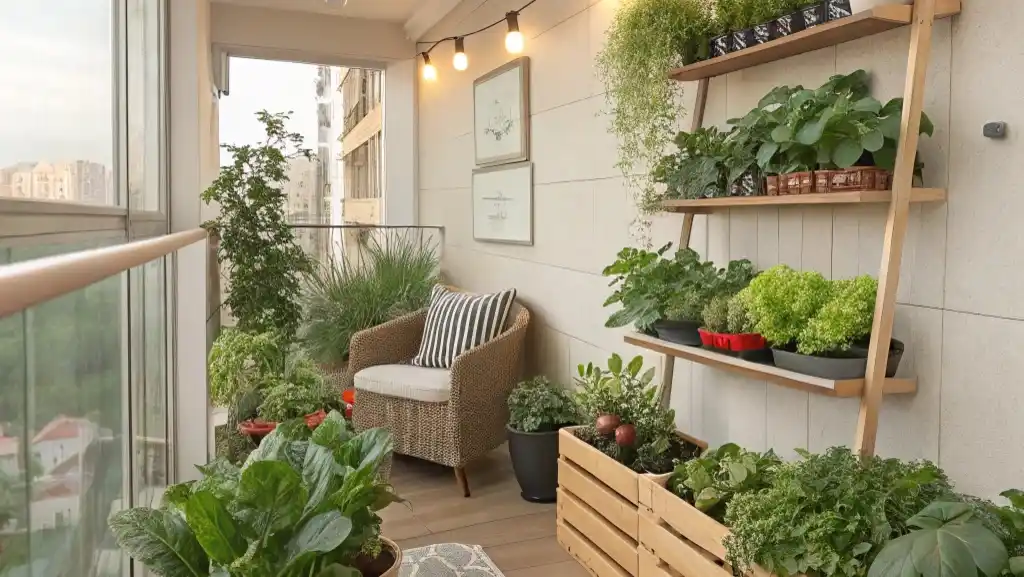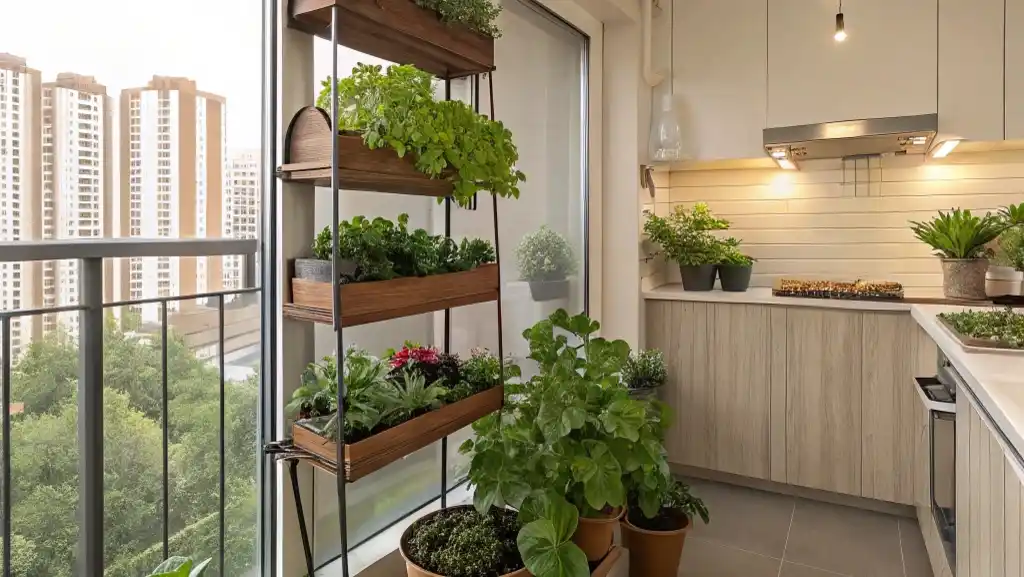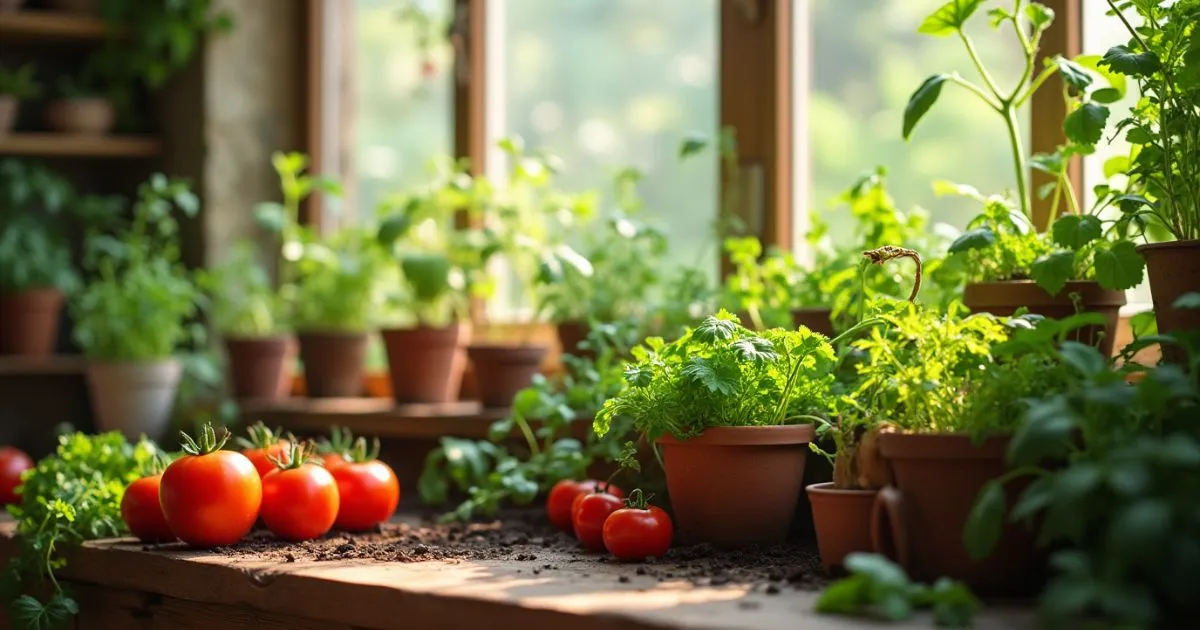In This Article
Creating an indoor vegetable garden is a fantastic way to bring fresh, organic produce into your home all year long. Even if you live in an apartment or lack outdoor space, you can successfully grow a range of vegetables indoors with just a bit of planning and care. This guide will cover everything you need to know to start your own indoor garden, from choosing the right vegetables to troubleshooting common challenges. Let’s dive in!

Why Start an Indoor Vegetable Garden?
Indoor vegetable gardening has numerous benefits. Not only does it provide fresh, home-grown food, but it also allows you to control the growing conditions, ensuring your produce is organic and chemical-free. Indoor gardening is also ideal for urban dwellers or anyone without a backyard. Plus, having greenery indoors can improve air quality, reduce stress, and add beauty to your living space.
7 Steps to Set Up an Indoor Vegetable Garden
Step 1: Choose the Right Vegetables
Start with vegetables that are well-suited for indoor environments. Leafy greens like lettuce, spinach, and kale grow quickly and are easy to maintain. Herbs like basil, parsley, and mint are also popular choices because they require minimal light and space. If you’re more adventurous, try root vegetables like radishes, carrots, and green onions, which do well in containers.
Step 2: Find the Perfect Spot
Your indoor vegetables will need access to light, preferably from a south-facing window. If natural sunlight is limited, consider placing your plants near a window that gets indirect light or investing in grow lights to supplement. The area should be warm, as most vegetables thrive in temperatures between 65-75°F.
Step 3: Use Quality Containers and Soil
Good drainage is essential for avoiding water accumulation and subsequent rot of the roots. Use containers with holes at the bottom, and place saucers underneath to catch any excess water. Select an appropriate and well-draining potting mix that is specially designed to grow vegetables. A light, well-draining soil with organic matter will provide the best results, ensuring healthy plant growth and nutrient absorption.
Step 4: Ensure Proper Lighting
Vegetables require ample light for photosynthesis and growth. The majority of vegetables require 6-8 hours of sunlight per day. If your home lacks natural light, use full-spectrum LED grow lights positioned 6-12 inches above your plants. These lights mimic sunlight and are energy-efficient, making them ideal for indoor gardens.
Step 5: Water Wisely
Indoor plants need regular watering, but overwatering is a common mistake. Touch the top inch of the soil in order to check its moisture : depending on its dryness degree, decide whether it’s time to water or not. Be mindful of the season, as indoor plants may need less water in winter when they grow more slowly.
Step 6: Fertilize Regularly
Indoor plants often need additional nutrients since they don’t have access to natural soil. A balanced water-soluble fertilizer has to be applied every two weeks during the seasons when the plant is actively growing (spring and summer). Be cautious not to over-fertilize, as too many nutrients can harm your plants.
Step 7: Keep an Eye on Pests
Although less common indoors, pests can still find their way into your garden. Regularly inspect your plants for signs of insects like aphids, spider mites, or fungus gnats. Use natural pest control methods, such as insecticidal soap or neem oil, to keep your plants healthy and pest-free.
Best Vegetables for Indoor Growing
- Lettuce and Spinach: Easy to grow and quick to harvest, ideal for fresh salads.
- Carrots: Perfect for container gardening and offer a great return on effort.
- Herbs (Basil, Parsley, Chives): Great for adding fresh flavor to dishes.
- Radishes: A fast-growing crop that’s well-suited for limited space.
- Green Onions: Thrive indoors and regrow after each cutting.
- Cherry Tomatoes: Require a bit more light but can produce year-round in the right conditions.
Each of these vegetables brings something unique to the indoor garden, making them excellent choices for beginners and experienced gardeners alike.

Maintaining Your Indoor Vegetable Garden
Keeping an indoor garden healthy requires regular care. Water your plants as needed, monitor light levels, and check for any signs of pests or nutrient deficiencies. Rotate your plants occasionally to ensure even light distribution, especially if using natural sunlight. Pruning and harvesting regularly will encourage new growth and prevent overcrowding.
Common Indoor Vegetable Garden Mistakes to Avoid
- Overwatering: Watering too much can cause rotting of the roots. . Always check the soil before watering.
- Insufficient Light: Plants that don’t receive enough light will grow leggy and weak. In case natural light is Insufficient, grow lights is the solution.
- Ignoring Pests: Even indoor plants can get pests, so inspect your plants regularly.
- Crowding Plants: Ensure each plant has adequate space to grow and access light.
- Neglecting Soil Quality: Indoor plants depend on the nutrients in the soil. Refresh the soil or add compost periodically.
FAQs
Can you grow vegetables indoors year-round?
Yes, you can grow vegetables indoors year-round with the right setup. Just make sure to provide adequate lighting, temperature, and care.
What vegetables are easiest to grow indoors?
Leafy greens (lettuce, spinach), herbs (basil, parsley), and root vegetables (radishes, carrots) are among the easiest vegetables to grow indoors.
How much light do indoor vegetables need?
Indoor vegetables mostly need about 6-8 hours of light daily. If the exposure to natural light is limited, make use of full-spectrum grow lights to support.
Do indoor plants need to be pollinated?
Some vegetables, like tomatoes and peppers, may require pollination. You can hand-pollinate these plants by gently shaking them or using a soft brush to transfer pollen.
What measures can I take to control pests in an indoor garden ?
Regularly inspect your plants, avoid overwatering, and use insecticidal soap or neem oil if pests appear. Keep your garden area clean to discourage pests.
How often should I fertilize my indoor vegetable plants?
Most indoor vegetables benefit from fertilizing every two weeks during the growing season. Use a balanced, water-soluble fertilizer suitable for vegetables.
What’s the best type of soil for indoor vegetable gardening?
Use a high-quality potting mix designed for vegetables. It should be well-draining, light, and rich in organic matter.
How can I increase humidity for my indoor plants?
Placing a tray of water near your plants, misting occasionally, or using a humidifier can help increase humidity levels for indoor vegetables.
Can I reuse potting soil from my indoor vegetable garden?
You can reuse potting soil, but it’s best to refresh it with compost or new potting mix to restore nutrients. Avoid reusing soil if previous plants had pest or disease issues.
How long does it take to harvest from an indoor vegetable garden?
Harvest times vary by vegetable. Leafy greens like spinach can be ready in 4-6 weeks, while root vegetables like carrots may take 2-3 months.
How much space do indoor vegetables need?
Container size depends on the vegetable. Herbs and greens need smaller containers (6-8 inches deep), while root vegetables may require 12 inches of depth or more.
Conclusion
Starting an indoor vegetable garden is an enjoyable, productive hobby that allows you to have fresh vegetables at your fingertips, no matter where you live. With just a bit of time, planning, and care, you can grow a variety of delicious and nutritious vegetables indoors. From selecting the right vegetables to following basic care tips, this guide covers everything you need to know to get started. So, are you ready to bring a bit of green into your home? Start today, and enjoy the rewards of growing your own indoor vegetable garden!
Happy gardening!

